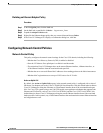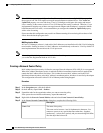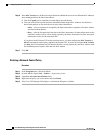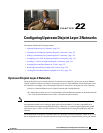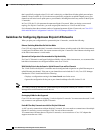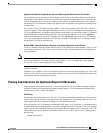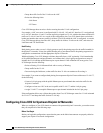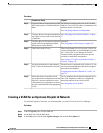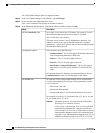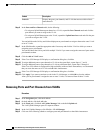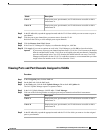
• Drops the traffic for all of the VLANs on the vNIC.
• Raises the following faults:
◦ Link Down
◦ VIF Down
Cisco UCS Manager does not raise a fault or warning about the VLAN configuration.
For example, a vNIC on a server is configured with VLANs 101, 102, and 103. Interface 1/3 is assigned only
to VLAN 102. Interfaces 1/1 and 1/2 are not explicitly assigned to a VLAN, which makes them available for
traffic on VLANs 101 and 103. As a result of this configuration, the Cisco UCS domain does not include a
border port interface that can carry traffic for all three VLANS for which the vNIC is configured. As a result,
Cisco UCS Manager brings down the vNIC, drops traffic for all three VLANs on the vNIC, and raises the
Link Down and VIF Down faults.
Hard Pinning
Hard pinning occurs when you use LAN pin groups to specify the pinning target for the traffic intended for
the disjoint L2 networks. In turn, the uplink Ethernet port or port channel that is the pinning target must be
configured to communicate with the appropriate disjoint L2 network.
With hard pinning, Cisco UCS Manager validates data traffic from a vNIC against the VLAN membership
of all uplink Ethernet ports and port channels, and validates the LAN pin group configuration to ensure it
includes the VLAN and the uplink Ethernet port or port channel. If the validation fails at any point, Cisco
UCS Manager does the following:
• Raises a Pinning VLAN Mismatch fault with a severity of Warning.
• Drops traffic for the VLAN.
• Does not bring the link down, so that traffic for other VLANs can continue to flow along it.
For example, if you want to configure hard pinning for an upstream disjoint L2 network that uses VLAN 177,
do the following:
• Create a LAN pin group with the uplink Ethernet port or port channel that carries the traffic for the
disjoint L2 network.
• Configure at least one vNIC in the service profile with VLAN 177 and the LAN pin group.
• Assign VLAN 177 to an uplink Ethernet port or port channel included in the LAN pin group
If the configuration fails at any of these three points, then Cisco UCS Manager warns for a VLAN mismatch
for VLAN 177 and drops the traffic for that VLAN only.
Configuring Cisco UCS for Upstream Disjoint L2 Networks
When you configure a Cisco UCS domain to connect with upstream disjoint L2 networks, you need to ensure
that you complete all of the following steps.
Before You Begin
Before you begin this configuration, ensure that the ports on the fabric interconnects are properly cabled to
support your disjoint L2 networks configuration.
Cisco UCS Manager GUI Configuration Guide, Release 2.0
324 OL-25712-04
Configuring Cisco UCS for Upstream Disjoint L2 Networks




